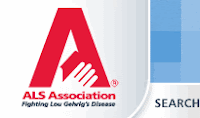 Today's Post is written by Jennifer Sommerio-Bodoh. Jen blogs about her life experiences in a witty, irreverant manner. Jen's blog is not for the faint of heart, as Jen has been known to turn a 'salty' phrase or two. Jen is a creative and giving person... I love that she has a swear jar (every time she swears, she has to put money in the jar) and all money is being donated to the Ronald McDonald House. Jen has another special cause that is near and dear to her heart and she agreed to guest blog today to highlight her cause. Thanks Jen! Happy Mother's Day to Grandma Bonnie and Jen! And to mothers and grandmothers everywhere!
Today's Post is written by Jennifer Sommerio-Bodoh. Jen blogs about her life experiences in a witty, irreverant manner. Jen's blog is not for the faint of heart, as Jen has been known to turn a 'salty' phrase or two. Jen is a creative and giving person... I love that she has a swear jar (every time she swears, she has to put money in the jar) and all money is being donated to the Ronald McDonald House. Jen has another special cause that is near and dear to her heart and she agreed to guest blog today to highlight her cause. Thanks Jen! Happy Mother's Day to Grandma Bonnie and Jen! And to mothers and grandmothers everywhere! Alzheimer’s Disease – Memory Loss is Not a Normal Part of Aging
Isn’t Alzheimer’s just a disease of forgetful old people? Many people think as you get older it’s normal to become increasingly forgetful. And you do – some forgetfulness is normal and expected. But, when is forgetfulness normal and memory loss excessive? What happens when your loved one starts to forget important information – like their birthday? Their address? Their spouse?
Alzheimer’s Disease (AD) is a brain disorder named for German physician Alois Alzheimer, who first described it in 1906. Today we know that Alzheimer’s:
• Is a progressive and fatal brain disease. As many as 5.3 million Americans are living with Alzheimer’s disease. Alzheimer's destroys brain cells, causing memory loss and problems with thinking and behavior severe enough to affect work, lifelong hobbies or social life. Alzheimer’s gets worse over time, and it is fatal. Today it is the seventh-leading cause of death in the United States. Learn more: Warning Signs and Stages of Alzheimer’s Disease.
• Is the most common form of dementia, a general term for memory loss and other intellectual abilities serious enough to interfere with daily life. Alzheimer’s disease accounts for 50 to 80 percent of dementia cases. Other types of dementia include vascular dementia, mixed dementia, dementia with Lewy bodies and frontotemporal dementia.
• Has no current cure. But treatments for symptoms, combined with the right services and support, can make life better for the millions of Americans living with Alzheimer’s. There is an accelerating worldwide effort under way to find better ways to treat the disease, delay its onset, or prevent it from developing. Learn more about recent progress in Alzheimer research funded by the Alzheimer’s Association in the Research section.
How Can You Help? (click on the links to find out how)
Donate to Alzheimer's Association.
Give to the Alzheimer's Association May 14 & 15 Weekend. Look for volunteers sprouting up on your local street corners. They're collecting donations to help fight Alzheimer's disease during Bankers Life and Casualty Company's Forget Me Not Days®. And as thanks for your donation, you'll receive Forget-Me-Not flower seeds to plant in honor of the estimated 5.3 million Americans living with Alzheimer's.
Alzheimer’s disease is NOT just a disease for old people! Alzheimer's can strike people in their 30s, 40s and even 50s. This is called younger-onset Alzheimer's. It is estimated that there are as many as 5.3 million people living with Alzheimer’s disease in the United States. This includes 5.1 million people age 65 and over and 200,000 people under age 65 with younger-onset Alzheimer’s disease.
I didn’t know anything about Alzheimer’s Disease until my Grandma, Bonnie, was diagnosed in April 2009 at 68-years-old. She is currently in Stage 4 – Moderate Cognitive Decline (mild or early stage AD). She is being cared for by her husband, my Papa. Our family has come together in many different ways to help my Papa and to raise awareness of AD.
I am 30-years-old and my grandparents’ oldest granddaughter. Last September my family and I participated in the 2009 Memory Walk as Team Bonnie’s Braves. I am proud to announce that our team raised over $4,000.00 for Alzheimer’s Research!
I am incredibly honored to have been asked to be a guest blogger for 1 Way Every Day. Thank you for reading about a cause near and dear to my heart. And thank you to Don for starting this inspirational website.
Jennifer Sommerio-Bodoh
Source: http://www.alz.org




























